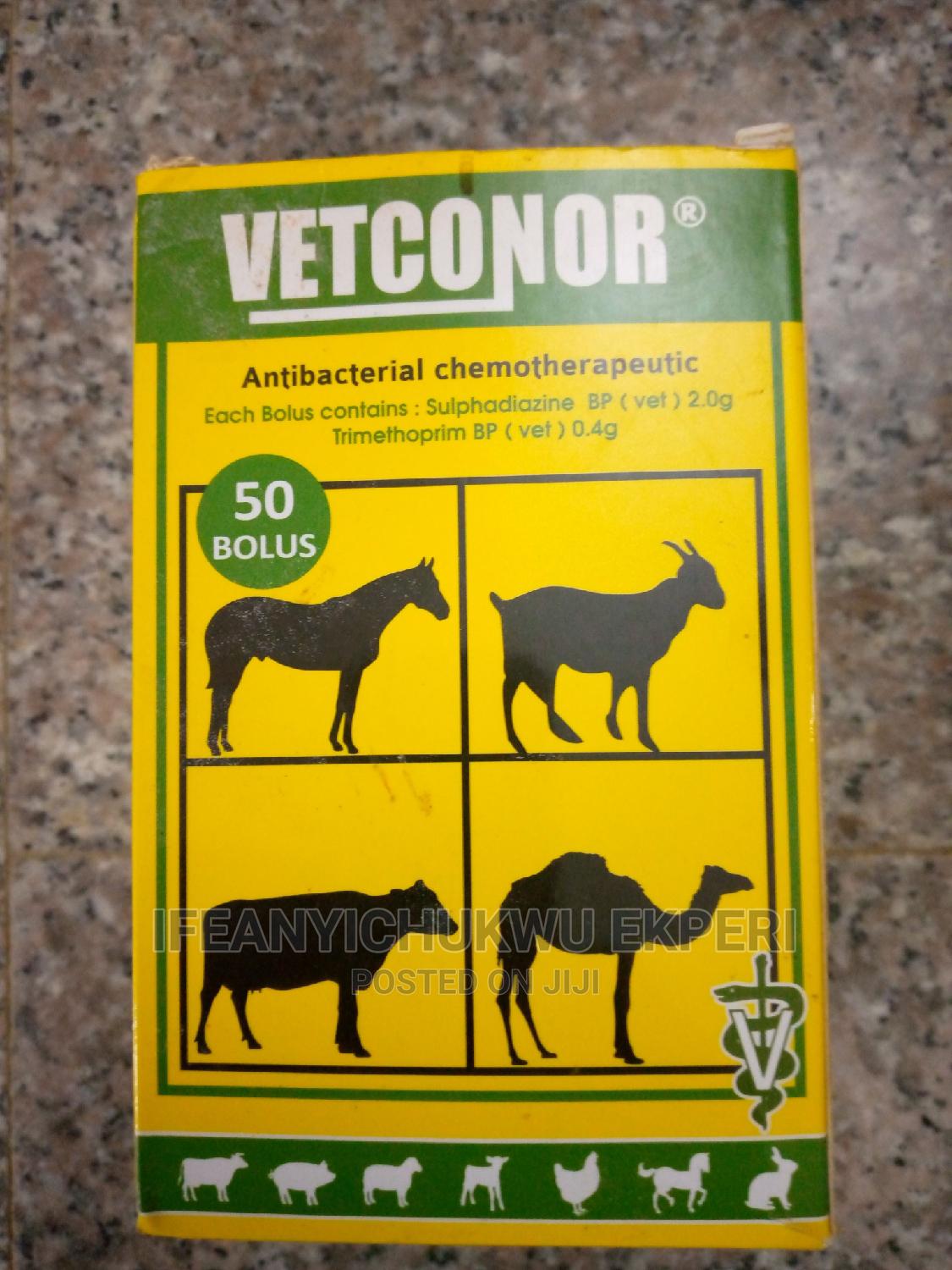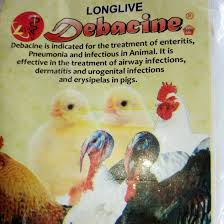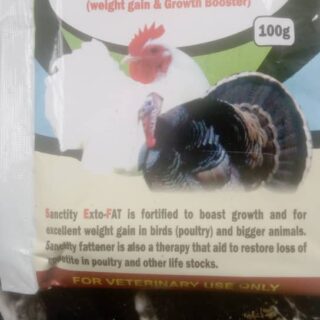Your cart is currently empty!

Single Product
Vetconor
vetconor is a combination of trimethroprim and sulphaziazine is bactericidal in nature and active against both Gram positive and Gram negative organism namely: Actinobacillus ligneiresii, Actinomyces bovis, Corynebacteri-um pyogenes, ehrlichia canis, Escherichia coli, necrophorus fusiform, Haemphilus suis, Klebsiella pneimoniae, moraxwlla bovis, Neorickettsia helminthoec, Pasteurella haemolytica, Pasteurella multocida, Salmonella species, Staphylococcus aureus, Streptococcus equi, Toxoplasma gondii…
Description
vetconor is a combination of trimethroprim and sulphaziazine is bactericidal in nature and active against both Gram positive and Gram negative organism namely: Actinobacillus ligneiresii, Actinomyces bovis, Corynebacteri-um pyogenes, ehrlichia canis, Escherichia coli, necrophorus fusiform, Haemphilus suis, Klebsiella pneimoniae, moraxwlla bovis, Neorickettsia helminthoec, Pasteurella haemolytica, Pasteurella multocida, Salmonella species, Staphylococcus aureus, Streptococcus equi, Toxoplasma gondii and Coccidia parasite.
Composition:
Each Bolus contains:
Sulphadiazine BP (vet) 2.0g
Trimethroprim BP (vet) 0.4g
Indications:
Actinobacillosis, Actinomycosis, Colibaccillosis, mastitis, Strangles, salmonellosis, infectious keratitis, infectious polyathritis, foot rot, Necrotic rhinitis, Ehrilicho-sis, Toxoplasmosis, Coccidiosis, Respiratory tract infections, Uro-genital tract infection, G I. TRACT Infections.
Dosage And Administration:
ORAL:
large Animals: 4 bolus daily
Small Animals: half to one bolus daily
Infrauterine:
Large Animals: 2 – 3 bolus per day for three days
Small Animal: half to one bolus per day for three days
WARNING INDICATION:
Animal should not be slaughtered until three days after the last treatment with vetconor bolus.
Milk from treated cows should not be used 5 days after the last treatment with VETCONOR.
Prolonged treatment should be avoided especially in young livestocks as it may cause avitaminosis B
Storage
Store in a cool dry place protected from sunlight
Anti-Microbial Activities
Antimicrobial activity evaluation methods in food are as old as the existence of disinfectants and antibiotics. For example, determination of the antimicrobial effect of vapours of crushed garlic against Mycobacterium species, Escherichia coli, Serratia marcescens and B. subtilus was studied as early as 1936 (Walton et al., 1936).
Crushed garlic was placed on the lid of a Petri dish and the bottom of the dish containing nutrient medium was inverted over the top.
Most of the methods used for evaluation of the antimicrobial activity in foods can be classified as shown in Fig. 14.2.



